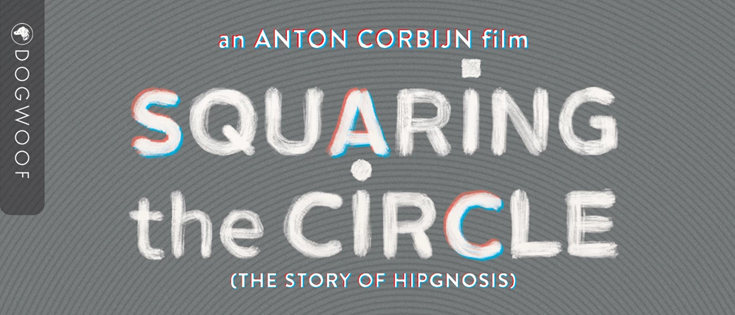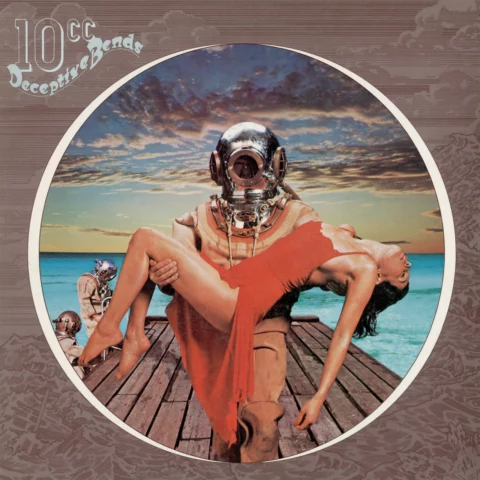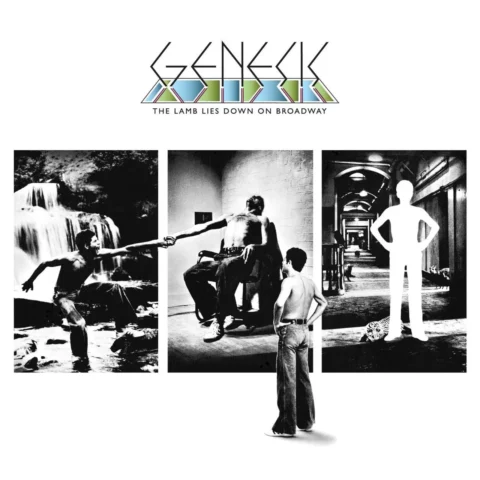in-store offers
Squaring the Circle
(The Story of Hipgnosis)


Anton Corbijn’s debut documentary, Squaring the Circle: The Story of Hipgnosis throws us headfirst into the psychedelic world of Storm Thorgerson and Aubrey “Po” Powell, the mavericks who birthed the avant-garde album art sanctuary, Hipgnosis. In the crucible of the ’60s counterculture, this duo dared to challenge the norms, igniting a visual revolution that’d set the music scene ablaze. After meeting in Cambridge, Thorgerson and Powell fused their cosmic energies, creating an atelier of untamed imagination. They conjured visuals that transcended the boundaries of traditional album art, not just designing LP covers; but crafting immersive experiences that transported listeners into the heart and soul of the music.
Corbijn’s lens is wild – like looking through a kaleidoscope of music history. Interviews with legends blend with stunning visuals, unraveling like acid dreams – twisted, funny, and utterly mind-blowing. We get a look into the minds of the gods themselves. Roger Waters, David Gilmour, Nick Mason from Pink Floyd, the dudes from Led Zeppelin – Jimmy Page and Robert Plant, the iconic Paul McCartney, Peter Gabriel, and more! Like a jam session of rock legends reminiscing about the trailblazers who painted the landscape of their careers. So, brace yourself, for this wild ride of interviews and tales. Squaring the Circle will warp your mind, dance with your senses, and leave you in awe of the unbreakable bond between art and music.
Gearing up for the August 7th release date, we thought we’d take a look at our five favourite Hipgnosis album covers…

Pink Floyd – Animals
Animals, Pink Floyd’s groundbreaking 1977 album, embarks on a mesmerizing sonic journey, fusing progressive rock with poignant social commentary. Through four sprawling tracks, the band delves into the human condition, portraying society as divided into three “animals”: the ruthless Dogs, the submissive Sheep, and the cunning Pigs. Roger Waters’ lyrics resonate with powerful themes of alienation, greed, and societal decay, while David Gilmour’s evocative guitar work weaves a haunting tapestry of emotions.
The iconic image depicting an inflatable pig floating between two tall chimneys of Battersea Power Station in London is one of the most striking in all the iconography of the Floyd. The pig itself, known as “Algie” evokes a sense of surrealism with it being so out of place in it’s surroundings. It’s placement symbolising the oppressive corporate and political forces that the album’s concept criticizes. Battersea Power Station itself holds significance in British history and architecture, being an iconic and imposing structure. Their choice to use this location further reinforces the theme of industrialization and the power structures in society that they were so heavily critiquing on the album. During the photoshoot for the cover, the inflatable pig broke free from its moorings and flew into the sky, causing a bit of chaos before eventually being retrieved. This incident added an unexpected layer of notoriety to the cover art, making it even more memorable.
 10cc – Deceptive Bends
10cc – Deceptive Bends
Following Kevin Godley and Lol Creme’s departure, the band rebounded with Graham Gouldman and Eric Stewart at the helm. The album oozes with catchy melodies and sharp lyrics, exploring themes of love, loss, and personal struggles. From the infectious hit The Things We Do for Love to the quirky Art for Art’s Sake, each track showcases the band’s exceptional musicianship and clever songcraft.
The visually arresting scene that echoes the band’s imaginative and artistic sensibilities is perfect for the album artwork. Showcasing a surreal scenario of a man donning a scuba suit, valiantly attempting to save a woman in distress from drowning. The composition unfolds against a backdrop of cerulean ocean waves and overcast skies, evoking a sense of drama and urgency. Just as 10cc’s music weaves a tapestry of emotions and storytelling, the cover art adds another layer of depth to the overall experience, inviting the audience to immerse themselves in the band’s imaginative universe.
 Genesis – The Lamb Lies Down On Broadway
Genesis – The Lamb Lies Down On Broadway
The last album to feature Peter Gabriel on vocals, The Lamb Lies Down on Broadway is Genesis’ captivating and ambitious double concept album, showcasing their prog rock brilliance. The album’s narrative takes listeners on a surreal odyssey alongside Rael, a Puerto Rican street kid, as he embarks on a mind-bending adventure in a parallel world. Peter Gabriel’s evocative vocals bring Rael’s journey to life with emotive prowess. While the band’s intricate compositions blend rock, folk, and experimental elements.
The protagonist, Rael, stepping out of one of the three rectangular photographs immediately jumps out at you on the cover art. Depicted as if he is emerging from the frame into the real world, blurring the boundaries between the album’s concept and reality. This striking and imaginative design perfectly captures the album’s narrative-driven concept and Rael’s surreal journey. The black and white design, along with the arrangement of the photographs, exudes an aura of mystery and intrigue. It sets the stage for the album’s enigmatic storytelling and high drama storytelling.

Yes – Going for the one
Going for the One exhibits Yes’ exceptional talent and penchant for crafting intricate compositions. From the opening title track, they set the bar high with a display of virtuoso performances and cosmic interplay. Anderson’s hauntingly ethereal vocals dance amidst a whirlwind of intricate arrangements, leaving you spellbound and yearning for more. But don’t think for a second that this is a mere showcase of technical prowess, the band’s poetic prowess shines through as they beckon you to explore the corridors of nostalgia and the impermanence of existence.
Hipgnosis have provided a surreal scene with a naked man, gazing up at a cluster of skyscraper-like structures that seemingly pierce the sky. The artwork exudes a sense of wonder and contemplation, inviting the viewer to ponder the interplay between humanity, nature, and the vast urban landscapes. The juxtaposition of the nude figure against the towering urban landscape invites interpretation, leaving room for various symbolic meanings. Possibly representing the profound contrast between the simplicity and vulnerability of humanity against the complexity and imposing nature of modern civilization.

T.Rex – Electric Warrior
Released in 1971, this opus cements T.Rex, helmed by the enigmatic Marc Bolan, as pioneers of the Glam Rock genre. From the first notes of Mambo Sun, the album casts an enchanting spell, drawing listeners into a hypnotic groove. Bolan’s distinctive vocals, coupled with the band’s infectious rhythms, deliver a mesmerizing concoction of rock, funk, and pop sensibilities. The spirit of Electric Warrior extends its reach far beyond its time, exerting an indelible influence on subsequent generations of artists, with Bolan’s androgynous image and rock star charisma making him an icon.
The cover image showcases Bolan, rendered in shimmering gold, strumming his guitar against the backdrop of a colossal amplifier. This striking portrayal exudes a sense of grandeur and flamboyance, perfectly capturing the extravagant nature of the glam rock movement. The amplifier, standing tall behind Bolan, serves as a symbolic representation of the electrifying power of the music contained within the album. It reinforces the idea of the Electric Warrior accentuating the album’s energetic and electrifying sound that propelled T.Rex to the forefront of the music scene.

 10cc – Deceptive Bends
10cc – Deceptive Bends Genesis – The Lamb Lies Down On Broadway
Genesis – The Lamb Lies Down On Broadway